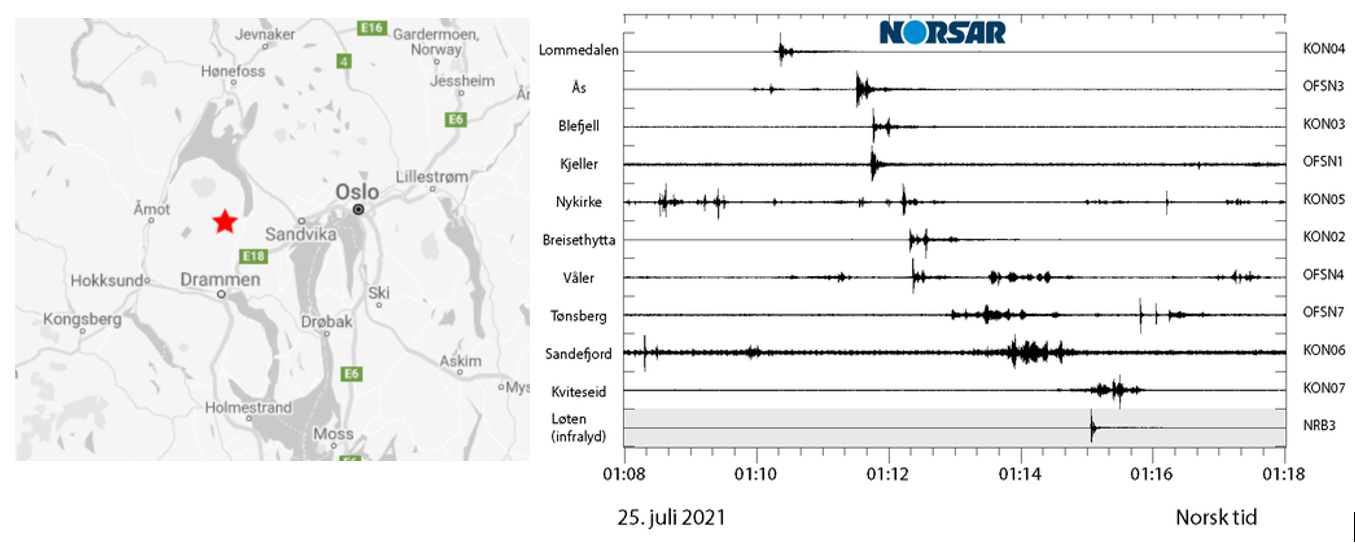During the night of July 25, 2021, an unusually large meteor was visible for approx. 5 seconds over large parts of southern Scandinavia and gave a powerful flash of light over eastern Norway. Many heard a roaring sound afterward. The signal of the acoustic shockwave was recorded on several seismic stations and infrasound stations operated by NORSAR.
The master thesis is offered at The Centre for Earth Evolution and Dynamics (CEED) and the Department of Informatics in close collaboration with NORSAR. The project will focus on more accurate location and modeling of infrasound and seismic data. The available infrasound array data in Fennoscandia and Europe will be used to locate the event, and results will be compared with a high-precision location from the close-by seismic network.
The thesis will include both the theoretical part and analysis of real data from the recent Oslo-Drammen meteor (July 2021) as well as from other recorded meteor impact events (e.g., the Chelyabinsk meteor in 2013).
Learning outcomes
- Understanding methods of determining locations and trajectories of the meteorite seismic sources including a 3D atmospheric model at the time of impact
- Understanding meteor-generated infrasound theory
Potential background
The potential student is expected to have a strong physics/mathematics background and well-developed programming skills. Experience with wave-propagation theory and simulations will be a significant advantage.

Click here for a bigger version of the picture.